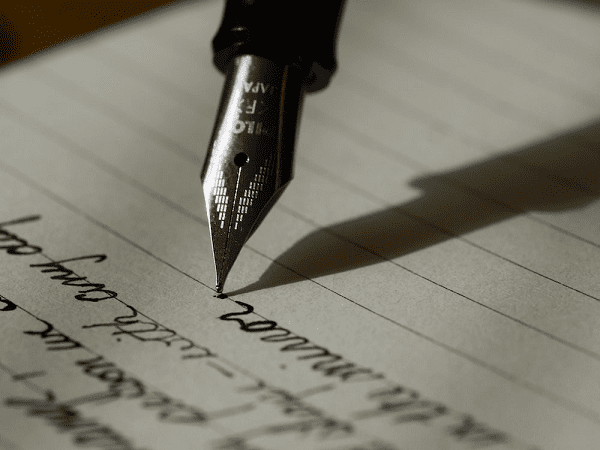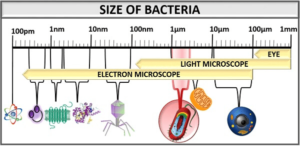Letter writing- Writing a letter can be a personal and thoughtful way to communicate with someone. Here’s a general template and guidelines for writing a letter:
1. Date:
- Start by writing the date on the top right or left corner of the page. You can write it in various formats, such as “October 4, 2023” or “4th October 2023.”
2. Address:
- If you know the recipient’s address, include it on the top left corner of the page. If you don’t have the recipient’s address, you can skip this part or write something like “To Whom It May Concern.”
3. Salutation:
- Begin your letter with a salutation. Use a formal greeting, such as “Dear Mr. Smith,” “Dear Dr. Johnson,” or “Dear Sir/Madam,” depending on your relationship with the recipient.
4. Opening Paragraph:
- In the first paragraph, briefly introduce yourself and the purpose of your letter. If it’s a personal letter, you might inquire about the recipient’s well-being or mention the reason for writing.
5. Body:
- The body of the letter is where you convey your message, thoughts, or information. Be clear, concise, and organized in your writing. Use paragraphs to break up long text for better readability.
6. Closing Paragraph:
- In the closing paragraph, summarize your main points and restate any important information. You can also express your hopes, wishes, or any future plans related to the topic.
7. Closing and Signature:
- Use a formal closing such as “Sincerely,” “Yours faithfully,” or “Best regards” followed by a comma. Leave enough space to sign your name below the closing. If you are sending a typed or printed letter, you can leave space for your handwritten signature.
8. Postscript (Optional):
- You can include a postscript (P.S.) if you want to add a brief note or mention something you forgot in the main body of the letter.
9. Additional Information (Optional):
- Include any additional contact information or references that may be relevant, such as your phone number or email address.
10. Format and Presentation: – Use a legible and professional font. Standard fonts like Arial, Times New Roman, or Calibri are good choices. – Maintain proper formatting with even margins and line spacing. – Use a clear and concise writing style, avoiding overly complex language. – Proofread your letter for spelling and grammar errors before sending it.
11. Enclosures (If Applicable): – If you are sending any documents or attachments with your letter, mention them at the bottom of the page by writing “Enclosures” or “Attachments” followed by a list.
12. Envelope: – If you’re sending a physical letter, write the recipient’s address on the front of the envelope, including your return address on the back flap.
Remember that the tone, style, and content of your letter will vary depending on the purpose and audience. Whether it’s a formal business letter, a friendly personal letter, a cover letter, or any other type of correspondence, tailoring your writing to the situation is key to effective communication.
What is Letter writing
Letter writing is the act of composing and sending a written message or communication to another person or organization using a physical or digital format. It has been a traditional and widely used method of personal and professional communication for centuries, although in recent years, it has become less common due to the prevalence of digital communication methods like email, texting, and social media.
Here are some key aspects of letter writing:
- Purpose: Letters can serve various purposes, including expressing gratitude, sharing news, making formal requests, applying for a job, communicating condolences, giving advice, or simply maintaining a personal or professional relationship.
- Components: A typical letter consists of several components, including the date, recipient’s address, salutation (greeting), body of the letter (the main message), closing, and signature. Additional elements, such as enclosures or postscripts, may also be included depending on the context.
- Tone: The tone of a letter depends on its purpose and the relationship between the sender and the recipient. It can range from formal and professional to informal and friendly.
- Format: The format of a letter can vary, but it generally follows established conventions for readability and professionalism. Common formats include block style (all text aligned to the left), modified block style (date and closing aligned to the right), and indented style.
- Language: Use appropriate language and grammar in your letter. Be clear and concise in your communication, and avoid using overly complex language unless it is necessary for the context.
- Signature: A handwritten or typed signature is typically included at the end of a letter to provide a personal touch and to verify the authenticity of the message.
- Delivery: Letters can be delivered through various means, including physical mail, email, fax, or even hand-delivered in some cases. The choice of delivery method depends on the sender’s preferences and the urgency of the message.
- Etiquette: It’s important to observe proper etiquette when writing letters, especially in formal or professional contexts. This includes addressing the recipient with the appropriate title and using polite language.
While letter writing has become less common in everyday communication, it still holds significance in certain situations, such as formal business correspondence, official documents, personal thank-you notes, and handwritten letters for special occasions. The art of letter writing involves not only conveying information but also expressing emotions, maintaining relationships, and adhering to cultural norms and conventions.
Who is Required Letter writing
“Required letter writing” generally refers to situations where it is necessary or mandatory to write a letter for a specific purpose. Such situations can arise in various personal, professional, or formal contexts. Here are some examples of when letter writing may be required:
- Job Application: When applying for a job, a formal cover letter is often required to accompany your resume. It serves as an introduction and highlights your qualifications and interest in the position.
- Resignation: If you’re leaving your job, you are typically required to write a resignation letter to formally notify your employer of your intent to resign and specify your last working day.
- Formal Complaint: In situations where you have a grievance or complaint, you may be required to write a formal complaint letter to the relevant authority or organization to address the issue.
- Legal Matters: In legal matters, such as disputes, contracts, or agreements, letter writing can be required to document important communications and agreements between parties.
- Academic and Professional Recommendations: Professors, employers, or colleagues may be asked to write letters of recommendation for students, job applicants, or individuals seeking promotions or academic opportunities.
- Official Correspondence: Government agencies and organizations often require written correspondence for various purposes, such as visa applications, immigration petitions, or tax matters.
- Thank-You Letters: In some cases, it is considered polite and expected to send thank-you letters or notes after receiving gifts, attending interviews, or participating in significant events.
- Appeals: If you disagree with a decision or action taken by an organization or authority, you may need to write an appeal letter to request a reconsideration of the decision.
- Scholarship Applications: When applying for scholarships or grants, applicants are often required to submit a letter or essay explaining their qualifications and reasons for seeking financial assistance.
- Formal Invitations: When hosting formal events, such as weddings, graduations, or conferences, it may be necessary to send formal invitations in the form of letters.
- Fundraising and Donation Requests: Nonprofit organizations may require letter writing to solicit donations, request sponsorships, or seek support for their causes.
In each of these situations, the format, content, and tone of the letter may vary depending on the specific requirements and conventions associated with the context. It’s important to carefully follow any guidelines or instructions provided and to use appropriate language and etiquette when writing required letters.
When is Required Letter writing

Required letter writing can occur in various situations, both in personal and professional contexts, where a written communication is necessary or mandated. Here are some common instances when required letter writing is necessary:
- Job Applications: When applying for a job, a cover letter is often required to introduce yourself, express your interest in the position, and highlight your qualifications.
- Resignation: If you intend to leave your current job, it’s typically required to write a resignation letter to formally notify your employer of your decision and provide notice.
- Complaints: When you have a grievance or complaint with a product, service, or organization, you may be required to write a formal complaint letter to address the issue.
- Legal Matters: Legal matters often involve written correspondence, including letters, to document agreements, disputes, or other important communications.
- Recommendations: Professors, employers, or colleagues may be asked to write letters of recommendation for individuals seeking jobs, academic opportunities, or awards.
- Official Correspondence: Government agencies and organizations may require written letters for various purposes, such as visa applications, immigration petitions, or tax matters.
- Thank-You Letters: Sending thank-you letters or notes is considered polite and expected after receiving gifts, attending interviews, or participating in significant events.
- Appeals: When you disagree with a decision or action taken by an organization or authority, you may need to write an appeal letter to request a reconsideration.
- Scholarship Applications: Applicants for scholarships or grants often need to submit letters or essays explaining their qualifications and reasons for seeking financial assistance.
- Invitations: When hosting formal events like weddings, graduations, or conferences, it may be necessary to send formal invitations in the form of letters.
- Fundraising and Donation Requests: Nonprofit organizations may require letter writing to solicit donations, request sponsorships, or seek support for their causes.
- Official Documentation: Certain personal and business transactions may require written confirmation or authorization, which can take the form of letters.
- Academic Purposes: Students may be required to write formal letters for assignments or applications to educational institutions.
The specific occasions and requirements for required letter writing can vary widely depending on the context and the expectations of the recipient or organization involved. It’s important to follow any guidelines, formatting, and language conventions associated with the type of letter you are required to write to ensure your communication is effective and appropriate for the situation.
Where is Required Letter writing
Required letter writing can take place in various settings and locations, depending on the specific circumstances and purposes of the letter. Here are some common locations or contexts where required letter writing may occur:
- Office/Workplace: Many required letters in professional settings, such as job applications, resignation letters, and formal business correspondence, are often written and submitted from the workplace.
- Home: Personal letters, including thank-you notes, invitations, and letters of recommendation, are typically written from one’s home.
- Government Offices: When dealing with government matters, such as visa applications, tax issues, or official requests, you may need to submit required letters to government agencies.
- Educational Institutions: Students may write letters for academic purposes, such as applications for scholarships, recommendation letters, or formal complaints, often from their school or college.
- Legal Offices: Legal matters often involve written correspondence, and letters may be required for various legal purposes, such as dispute resolution or contractual agreements.
- Nonprofit Organizations: When soliciting donations, seeking support, or addressing issues related to nonprofit causes, letters may be required from the offices or locations of the respective organizations.
- Medical Facilities: In some cases, formal letters may be required for medical purposes, such as medical leave requests, medical billing disputes, or requests for medical records.
- Online Platforms: In the digital age, many required letters are submitted electronically through email, online application portals, or official websites of organizations and institutions.
- Post Office: If you are sending physical letters by mail, you would typically drop them off at a post office or use postal services to send them to the intended recipients.
- Business Premises: Businesses may send and receive various required letters related to contracts, agreements, and business transactions from their offices or designated business locations.
- Legal Representation: Attorneys and legal professionals may draft and submit required letters from their law offices as part of legal proceedings.
- Embassies and Consulates: When dealing with matters related to immigration, visas, or international affairs, individuals may be required to submit letters to embassies or consulates.
- Event Venues: Organizers of formal events often send required letters, such as invitations or notices, from the location where the event is being planned.
The location of required letter writing can vary greatly depending on the nature of the letter, the context, and the preferences or guidelines provided by the recipient or organization involved. Additionally, the increasing use of digital communication has made it possible to submit required letters from virtually anywhere with internet access.
How is Required Letter writing
Required letter writing involves following specific conventions and guidelines to compose a letter that fulfills a particular purpose or meets certain requirements. Here’s a step-by-step guide on how to write a required letter effectively:
- Determine the Purpose: Clearly understand the purpose of the letter. Whether it’s a job application, resignation, complaint, recommendation, or any other type of letter, knowing the objective is crucial.
- Gather Information: Collect all necessary information, facts, and details related to the letter’s purpose. This may include dates, names, addresses, and specific information or evidence relevant to the situation.
- Choose the Appropriate Format: Different types of letters have different formats. Be sure to choose the correct format for your letter, such as block style, modified block style, or indented style, depending on the conventions associated with the letter type.
- Address the Recipient: Begin with a formal salutation, addressing the recipient appropriately. Use their full name and, if applicable, their title or position. For instance, “Dear Mr. Smith,” or “To Whom It May Concern.”
- Write a Clear and Concise Introduction: In the opening paragraph, introduce yourself and briefly explain the purpose of the letter. Mention any relevant background information or context.
- Present the Main Content: The body of the letter contains the main message or information you want to convey. Organize your thoughts logically and provide all necessary details. Use paragraphs to break up long text for readability.
- Supporting Evidence: If your letter requires supporting evidence, include it in the body or as attachments. Be sure to reference any enclosures or attachments within the letter.
- Use Appropriate Language: Maintain a professional and polite tone throughout the letter. Avoid using slang, jargon, or offensive language. Be clear and concise in your writing.
- Express Your Intent: In the closing paragraph, summarize the key points of your letter and clearly state your intent or desired outcome. Be specific about any requests or actions you expect from the recipient.
- Choose a Formal Closing: Use a formal closing, such as “Sincerely,” “Yours faithfully,” or “Best regards,” followed by a comma. Leave enough space for your signature.
- Include Your Signature: Sign the letter by hand if it’s a physical letter. If you’re sending an electronic letter, you can use a scanned signature or a digital signature if applicable.
- Provide Contact Information: Include your contact information, such as your address, phone number, and email, in the event the recipient needs to respond or contact you.
- Proofread and Edit: Review the letter carefully for spelling, grammar, and formatting errors. Correct any mistakes to ensure your letter appears professional and well-crafted.
- Address Envelope (If Physical): If you’re sending a physical letter, address the envelope with the recipient’s address and your return address on the back flap.
- Delivery Method: Choose an appropriate delivery method, such as mailing the letter, sending it via email, or submitting it through an online portal, depending on the recipient’s preferences and requirements.
- Keep Copies: Make copies of the letter for your records, especially for important correspondence or legal matters.
Remember that the specific requirements and conventions for required letter writing can vary depending on the type of letter and the expectations of the recipient or organization. Always carefully follow any guidelines provided and tailor your letter to suit the context and purpose.
Case Study on Letter writing
Let’s create a case study that illustrates the process of writing a formal letter. In this example, we’ll imagine a scenario where an employee is writing a letter of resignation to their employer.
Case Study: Writing a Resignation Letter
Background: John Smith has been working as a marketing manager at XYZ Corporation for the past five years. He has decided to resign from his position due to personal reasons and is required to write a formal resignation letter to his employer.
Step 1: Determine the Purpose John’s purpose is to formally notify his employer of his decision to resign from his position as a marketing manager at XYZ Corporation.
Step 2: Gather Information John gathers all the necessary information, including the date, his employer’s name and address, his own contact information, and the specific date of his last working day. He also reflects on his reasons for resigning.
Step 3: Choose the Appropriate Format Since this is a formal letter, John decides to use the block style format for his resignation letter.
Step 4: Address the Recipient John addresses his employer, Mr. James Anderson, with a formal salutation: “Dear Mr. Anderson,”
Step 5: Write a Clear and Concise Introduction In the opening paragraph, John introduces himself and explains the purpose of the letter. He mentions that he is resigning from his position as a marketing manager at XYZ Corporation.
Step 6: Present the Main Content In the body of the letter, John provides details about his decision to resign. He mentions his appreciation for the opportunities he had at the company, briefly explains his reasons for leaving, and expresses his willingness to assist in the transition.
Step 7: Supporting Evidence John includes a brief mention of any outstanding projects or responsibilities he has and expresses his commitment to ensuring a smooth transition.
Step 8: Use Appropriate Language Throughout the letter, John maintains a professional and polite tone. He avoids negative language and focuses on the positive aspects of his experience at the company.
Step 9: Express Your Intent In the closing paragraph, John summarizes his decision to resign and expresses his gratitude for the support he received during his tenure. He specifies his last working day, which is two weeks from the date of the letter.
Step 10: Choose a Formal Closing John concludes the letter with a formal closing: “Sincerely,” followed by a comma.
Step 11: Include Your Signature John signs the letter by hand in the space provided below the closing.
Step 12: Provide Contact Information He includes his contact information (address, phone number, and email) in case his employer needs to reach him during the notice period.
Step 13: Proofread and Edit John carefully proofreads the letter, checking for any spelling or grammar errors. He makes necessary corrections to ensure the letter is polished and professional.
Step 14: Address Envelope (If Physical) John addresses the envelope with his employer’s name and the company’s address, including his return address on the back flap.
Step 15: Delivery Method John prints the letter on company letterhead, places it in an envelope, and mails it to his employer. He also sends a digital copy via email for convenience.
Step 16: Keep Copies John keeps a copy of the resignation letter for his records.
In this case study, John successfully writes a formal resignation letter following the proper format and etiquette. His letter effectively communicates his decision to resign while maintaining professionalism and gratitude for his time at the company.
White paper on Letter writing
Title: The Art of Letter Writing: A Comprehensive Guide
Abstract: This white paper explores the timeless art of letter writing, delving into its historical significance, contemporary relevance, and practical guidelines. In an era dominated by digital communication, letter writing remains a valuable skill, bridging personal and professional connections, preserving a sense of authenticity, and serving diverse purposes.
Table of Contents
- Introduction
- The enduring importance of letter writing
- Objectives of the white paper
- Historical Significance
- The evolution of letter writing through history
- Prominent historical letters and their impact
- Contemporary Relevance
- The role of letters in today’s digital age
- Benefits of letter writing in various contexts
- Types of Letters
- An overview of common letter categories
- Examples and purposes of each type
- Key Components of a Letter
- Date and addresses
- Salutations and greetings
- Body content and structure
- Closings and signatures
- Etiquette and Style
- Guidelines for writing polite and effective letters
- Appropriate tone and language
- Formatting and Presentation
- Various letter formats
- Use of fonts, spacing, and margins
- Practical Tips
- Dos and don’ts of letter writing
- Proofreading and editing
- Digital vs. Physical Letters
- Advantages and disadvantages of both mediums
- Choosing the right medium for your message
- Letter Writing in Professional Settings
- Business letters, cover letters, and formal correspondence
- Letters of recommendation and resignation
- Letter Writing in Personal Life
- Personal letters, thank-you notes, and invitations
- Love letters and condolence letters
- Specialized Letter Writing
- Letters for legal purposes
- Letters for academic applications and scholarships
- Preserving the Art of Letter Writing
- Encouraging letter writing as a cultural practice
- Resources for learning and improving letter writing skills
- Conclusion
- The enduring value of letter writing
- Encouragement to embrace the art of letter writing in modern times
- References
Introduction
In an era dominated by rapid digital communication, the art of letter writing continues to hold a unique and significant place in our lives. Whether it’s a handwritten note to express love and gratitude, a formal business letter, or a heartfelt condolence letter, the act of composing and sending a letter is a deeply personal and thoughtful means of communication.
This white paper delves into the art of letter writing, tracing its historical significance, exploring its contemporary relevance, and offering practical guidance for crafting effective letters. In an age where emails, texts, and social media messages prevail, we aim to rekindle appreciation for this time-honored form of expression.
Throughout this white paper, we will examine the types of letters, key components, etiquette and style, formatting, and practical tips for writing letters effectively. We will also discuss the role of letter writing in both personal and professional contexts, highlighting its importance in various aspects of life.
As we explore the art of letter writing, our objective is to inspire and empower individuals to embrace this traditional yet enduring form of communication, preserving its significance in our fast-paced, digital world.





